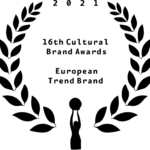With the presence of numerous delegations from Danube Region countries, the Danube Festival, which is held every other year in Ulm, was officially opened in the Edwin Scharff Haus today at 5 p.m.
Novi Sad is presenting itself on the pavilion located in the same space where the opening ceremony of the Danube Festival is held, therefore the audience used this opportunity to visit the stand of Novi Sad even before the official opening. President of the Assembly of Vojvodina, Mr Ištvan Pastor, was present at the opening, as well as the team of the Cultural Centre of Novi Sad that realises the appearance of Novi Sad at this famous European festival, led by Dr Andrej Fajgelj, president of the Organisational Board of ECC and director of CCNS.
Donaufest, the international Danube festival, is the leading event in the Danube Region when it comes to cultural manifestations and partnerships. It promotes unity in diversity, the idea of cultural cooperation and strengthening of European solidarity.
A quarter million visitors of this leading international event, which has been held since 1998, will have the chance to see the rich cultural offer of Novi Sad from today until the closing of the Festival on July 13th.
Various national communities, cultural institutions and festivals of Novi Sad, as well as the efforts of the City to become the European Capital of Culture, will be presented in more than 180 square metres of exhibition space in the central pavilion under the motto ‘Novi Sad – Open City’.
Special surprise will be the digital 3D model of Albert Einstein’s pipe, created especially for this audience in order to emphasise the connection between Ulm and Novi Sad. This unique artefact was available only upon special request in the City Museum of Novi Sad, and after its premier in Ulm it will be available to all on the website of the Digital Heritage of Novi Sad (bbns.rs). It is one of the rare examples of 3D digitisation of cultural heritage in the region.
Visitors of the pavilion will be able to get to know Novi Sad through exhibitions, screenings, artefacts and computer terminals, ‘silent disco’ through headphones will transfer the atmosphere of Novi Sad festivals, and there will be a section for children for which colouring books with motifs of Novi Sad were made. Special exhibitions will present different national communities of Novi Sad, including those that were more numerous in the past than today, like Armenians from Novi Sad.








